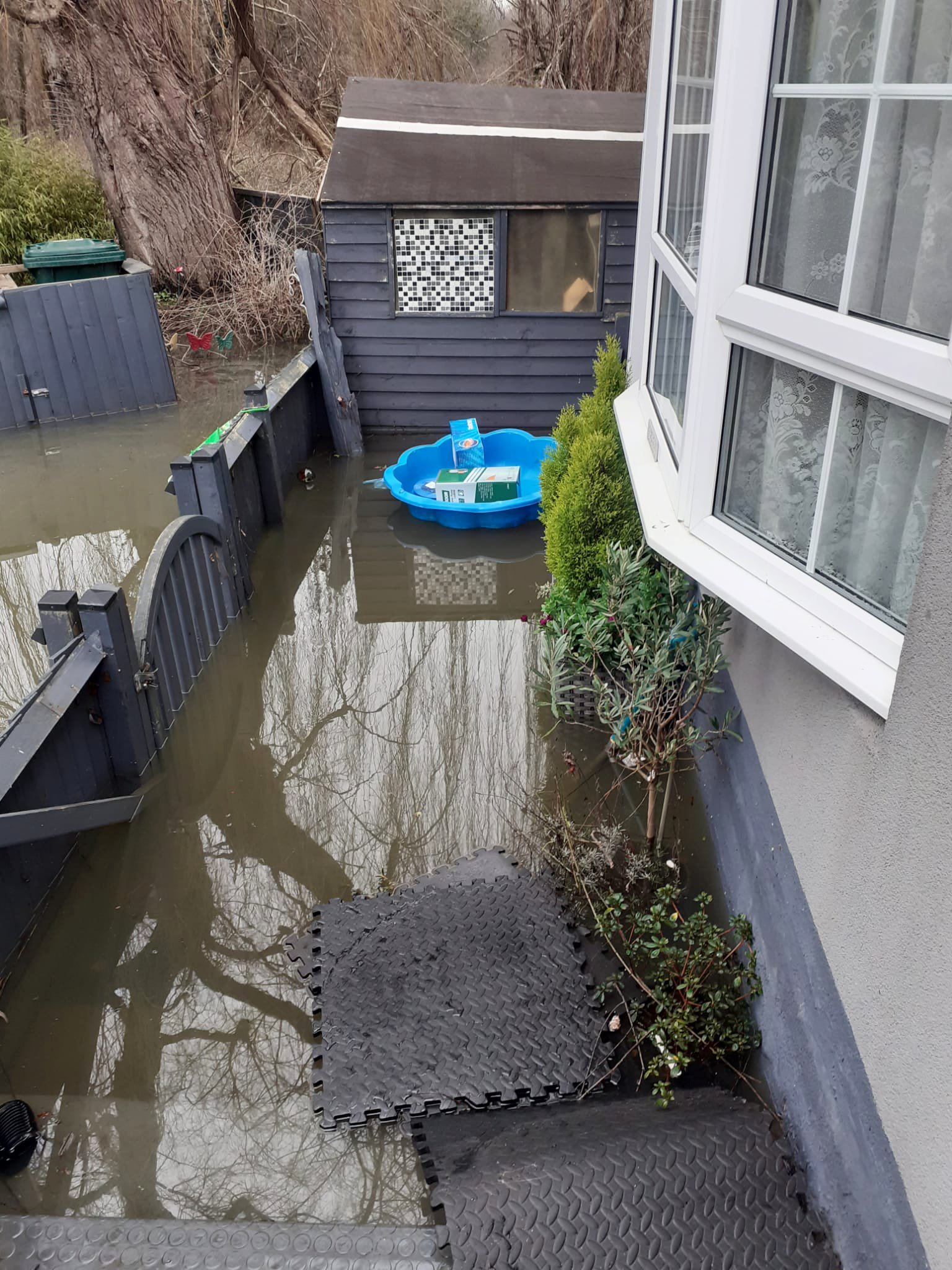Tracy Bennett purchased her £225,000 home in 2015 knowing it was at risk of flooding, but she was unaware of its insurability issues until after moving in.
Bennett, a 62-year-old resident of Abbeyfields mobile home park near the River Thames in Chertsey, Surrey, only learned post-sale that her garden had flooded in 2014, leaving the previous owner’s car submerged. The water had come alarmingly close to her home’s 4ft-high decking.
“If I had seen the pictures before buying the house, I wouldn’t have touched it with a barge pole,” she shared, reflecting on her experience as a retiree.
Initially, she secured home insurance for her first year, but upon renewal, the insurer denied her coverage. “I called many insurers and none of them would touch me,” Bennett explained.
This week, the UK has faced severe weather warnings, with some regions forecasted to receive a month’s worth of rain within hours. Experts highlight a growing difficulty for homeowners to obtain flood insurance.
“Insurers’ appetite is contracting all the time,” noted Liz Mitchell from Flood Assist, a specialized broker. “We’re unable to broker insurance for properties we previously could help due to firms withdrawing from the market.”
The contraction, according to Mitchell, is largely due to climate change, which has led to increasingly wet winters and less predictable flooding patterns, adversely affecting insurers’ financials. Reports from the Association for British Insurers (ABI) revealed that firms paid out £117 million in claims for flood damage in 2023, up from £62 million in 2018.
Standard home insurance policies typically cover flood damage, requiring both building and contents insurance for adequate protection. In January, the average insurance cost for a flood-previous home was £451, reflecting a 28% increase from the prior year’s average of £352, compared to £247 for homes that have never flooded.
Louise Clark from the ABI stated: “Home insurance premiums have risen due to multiple factors, including increased weather-related claims and rising rebuilding costs. Further government investment in flood defence and maintenance is necessary to support community resilience.”

According to Bennett’s experience, many insurers have become hesitant to offer coverage for high-risk properties. In January, Storm Henk caused about £2,500 worth of damage to her home, as the Thames overflowed, flooding her garden and surrounding decking. “I can’t describe the shock I was in,” she recounted. “The water was rushing in, and we started pumping it out, but it was soon futile. It was dreadful.”
Available Assistance
Since 2016, a government and insurance industry initiative known as Flood Re aims to ensure that flood-prone households can access affordable insurance. Insurers contribute £135 million annually to this re-insurance scheme, which covers payouts during floods. The fees charged by Flood Re are based on the property’s council tax band and not on flood risks, thereby reducing expenses.
“I advise shopping around,” said Andy Bord, CEO of Flood Re. “Insurers can mitigate concerns about flood risks using the scheme to cover this aspect.”
In the past year, Flood Re provided insurance for 265,000 policies, a significant increase from 127,326 in 2017, with a notable 32% of claims received since 2016 coming in the last year. However, the coverage only extends to homes constructed before 2009, intended to deter building on floodplains, thus excluding Bennett whose home was built in March 2009.
This limitation poses challenges for approximately 110,000 homes established on high-risk flood zones in the last decade, as estimated by Aviva. The Environment Agency anticipates that floodplain properties could nearly double in the next 50 years.
From 2009 to 2020, around 20,000 homes were erected in flood-prone areas without flood defences, according to Bright Blue.
Insurers like Ageas UK have ceased offering policies for any properties built in 2009 or later in flood-prone areas. Other firms, including Axa, Admiral, and Aviva, now decide coverage on a case-by-case basis. “In our earlier brokerage years, we could assist more post-2008 homes than we can today,” Mitchell pointed out.
Escalating Insurance Costs
Even residents of older properties face challenges obtaining affordable coverage in flood-prone locales. For example, Bryony Sadler experienced a staggering increase from £800 to £3,500 annually for her insurance renewal with Bradford and Bingley, marking a drastic 338% rise. Her house, built in 1892, should qualify for the Flood Re scheme.
“They completely blindsided us. We’ve been loyal customers for a decade, only having made one claim in 2014 due to flooding, and that wasn’t negligence on our part,” said Sadler, 49.

Sadler lives with her husband, Gavin, 45, their teenage children, Toby and Elsa, and her mother, Julie, 80. Their home experienced flooding a decade prior, necessitating a nine-month evacuation. Fortunately, the damages were covered by their insurer.
Markerstudy, Bradford and Bingley’s parent company, acknowledged Sadler’s loyalty and her dissatisfaction with the renewal quote, attributing rising costs to increased frequency of weather-related claims.
LV, the underwriter for Sadler’s policy, stated, “After reviewing the property’s flood risk, an increase in the premium was unavoidable. Flood Re addresses flood-related risks but not other potential dangers, such as subsidence.”
Flood Assist aided Sadler in finding a more affordable insurance option, although she still pays £1,200 annually for coverage.

How Homeowners Can Mitigate Risks
The Climate Change Committee foresees that by the 2050s, even with substantial carbon emission reduction efforts, 2.6 million individuals in the UK could face significant flood risks, an increase from the current 1.8 million. Without considerable intervention in emissions, the number could rise to 3.3 million.
Prospective buyers should check property flooding vulnerability via gov.uk and consider mitigation tactics. Previous flooding incidents should be included in the TA6 form that sellers complete.
For new builds, it’s advisable to review the planning application through the Planning Portal and analyze the flood risk assessment. Homeowners might also opt for a specialist flood risk survey, typically costing several hundred pounds.
Flood risk expert Mary Long-Dhonau recommends implementing flood doors, airbricks that can seal off during water rises, and flood-resistant materials for walls. Moreover, non-return valves can prevent sewage overflow during flooding.
“Demonstrating awareness of flood risks and taking preventive actions can enhance your insurability,” she advised.
If locating an insurer proves difficult, homeowners can consult the British Insurance Brokers’ Association’s directory of specialized firms dedicated to flood insurance.
“Showing awareness and taking proactive measures significantly boosts your chances of obtaining insurance,” she reiterated.
For those facing challenges in finding insurers, checking the British Insurance Brokers’ Association’s flood insurance directory can be beneficial as it lists firms that specialize in this area.
